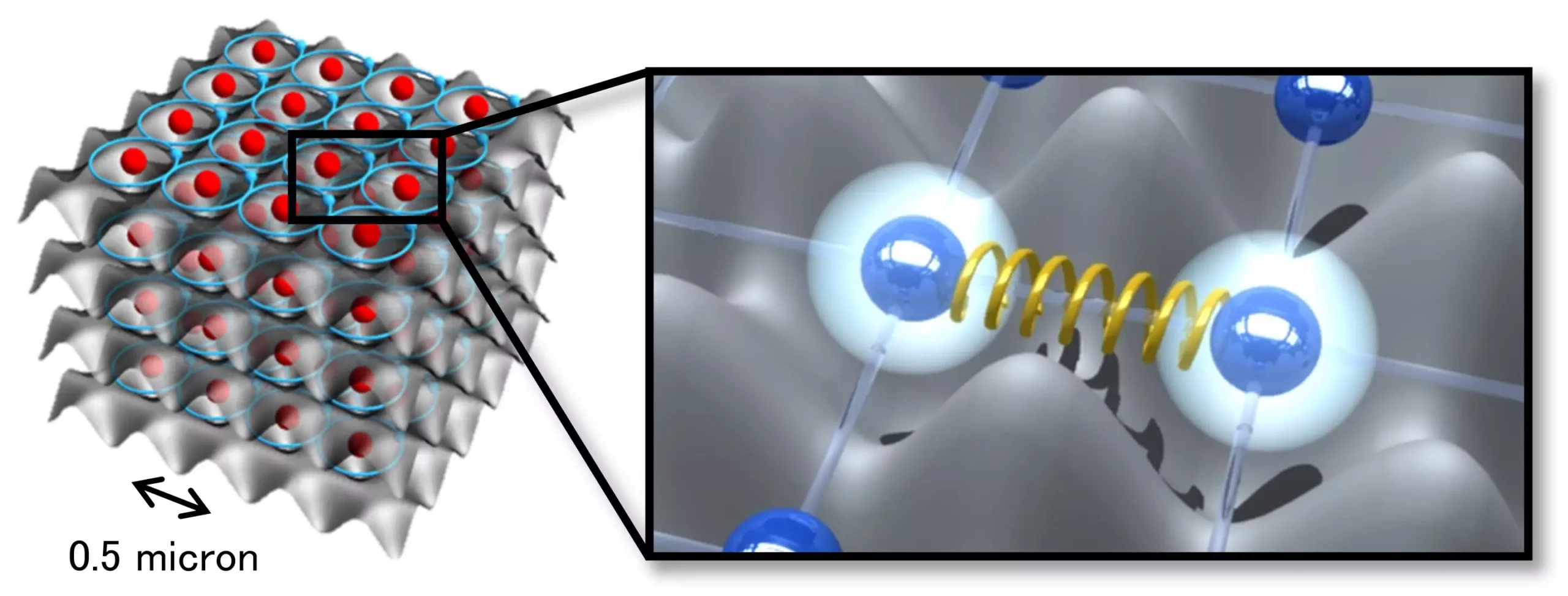The realm of quantum physics continually unveils new layers of complexity and potential, particularly within the domain of quantum entanglement. This phenomenon, where particles become interconnected such that the state of one directly influences the state of another, is foundational to many quantum technologies, including quantum computing and simulation. Recently, researchers at the Institute for Molecular Science have taken significant strides in this area by showcasing quantum entanglement between the electronic and motional states of ultracold atoms—an advance that may reshape our understanding and application of quantum systems.
A focus of this study lies in the use of Rydberg atoms, which possess exceedingly large electronic orbitals. These atoms serve as a promising platform for generating quantum entanglement due to their strong repulsive interactions when excited into these high-energy states. In their groundbreaking paper published in the esteemed journal Physical Review Letters, the researchers elucidate how they managed to create and observe quantum entanglement through a carefully orchestrated experiment involving an optical trap and laser cooling techniques.
Rydberg atoms allowed for this quantum entanglement to flourish, with the strong interaction between these atoms facilitating the establishment of correlations not only among the electronic states but also bridging into the realm of motional states. This finding is critical as it indicates that the properties defining quantum states can extend beyond mere electronic configurations, incorporating the dynamic behavior of the atoms themselves.
The experimental setup involved cooling approximately 300,000 Rubidium atoms to a frigid temperature of just 100 nanokelvin using advanced laser cooling techniques. These atoms were subsequently loaded into a sophisticated optical trap, designed to create a lattice structure with changing spatial arrangements. With a spacing of merely 0.5 microns, the apparatus allowed for precise manipulation of the atoms’ states.
An ultrafast laser pulse lasting merely 10 picoseconds was employed to generate a superposition of the ground state and the Rydberg state, an innovative approach that circumvented the typical limitations imposed by Rydberg blockade—a phenomenon where one excited Rydberg atom inhibits the excitation of nearby atoms. By carefully observing the time evolution of this quantum superposition, the researchers identified the formation of significant correlations between electronic states and motional states within a timeframe of just a few nanoseconds.
A fascinating aspect of this research is the role of repulsive forces between Rydberg atoms. Unlike previous studies that struggled with the constraints of Rydberg blockade, this study cleverly utilized rapid excitation to generate an observable correlation between whether an atom exists in a Rydberg state and its motion. This association introduces a layer of quantum behavior that has profound implications for future quantum technologies.
Essentially, the researchers demonstrated that the repulsive forces arising between closely spaced Rydberg atoms could be manipulated on a nanosecond scale. This control over entanglement suggests potential applications in quantum simulations that encompass motional dynamics alongside electronic configurations. The researchers propose that this simulation method could revolutionize our understanding of interactions in various materials, as the ability to incorporate repulsive interactions is crucial in simulating real-world complex systems.
The implications of this research extend into the field of quantum computing, particularly in developing advanced systems capable of operating on significantly faster timescales. The study’s authors are also pioneering efforts toward a novel ultrafast cold-atom quantum computer that promises to advance two-qubit gate operations by two orders of magnitude over traditional systems. Improving the fidelity of these operations is in critical demand within quantum computing circles, and the insights gleaned from entanglement studies may lead to breakthroughs in ensuring accurate computational results.
By experimentally establishing the mechanism through which electronic and motional state entanglement occurs, this research lays the groundwork for enhancing the reliability and efficiency of quantum operations. As interest in quantum technologies grows, the ability to manipulate states at unprecedented speeds could prove invaluable in paving the way for practical, socially beneficial quantum computers.
The exploration of quantum entanglement via the intersection of electronic and motional states represents an exciting frontier in quantum research. The innovative methods developed by the Institute for Molecular Science not only push the envelope of current scientific understanding but also potentially unlock new pathways in quantum simulations and computing. As researchers continue to delve deeper into the fascinating world of quantum mechanics, the practical applications of these discoveries promise to reshape technology in ways we can only begin to imagine.


Leave a Reply